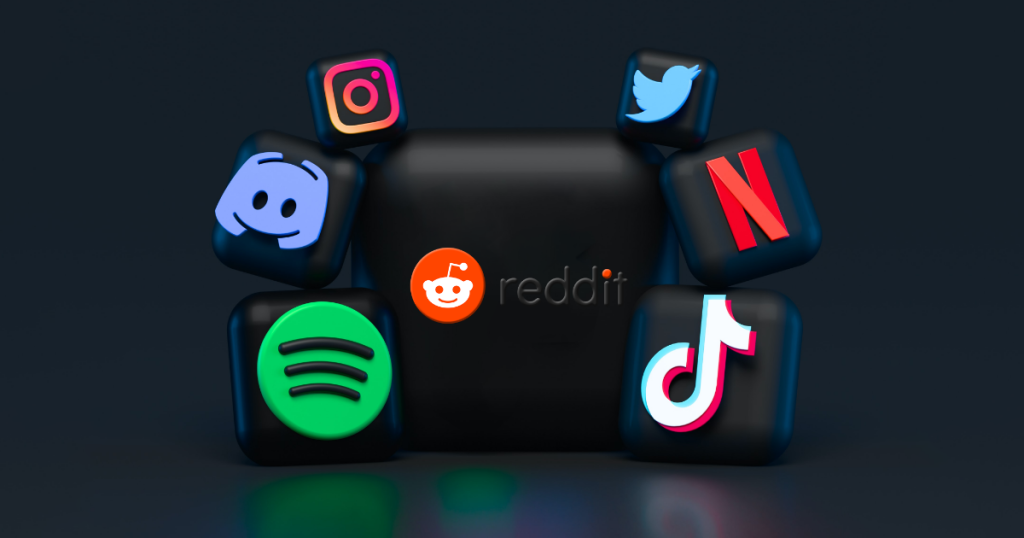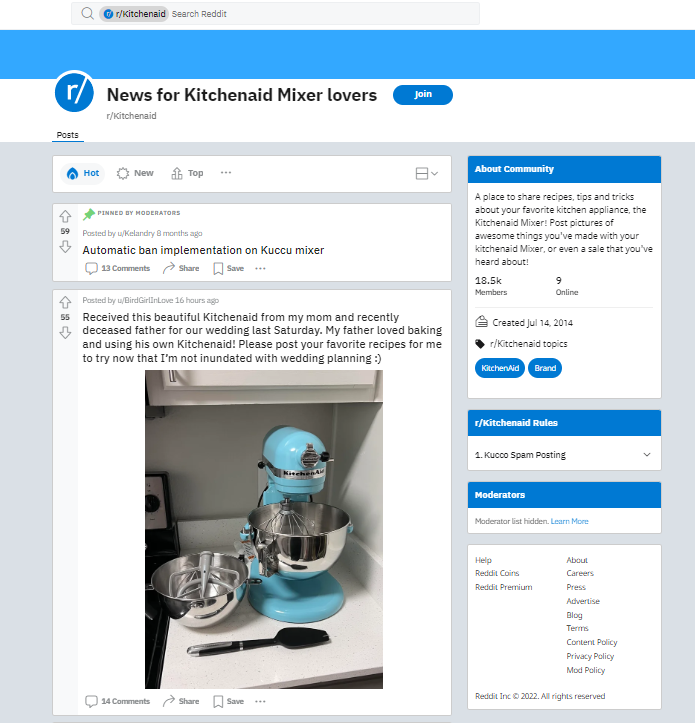The power of social communities

Marketers are always looking for new channels to engage with users and form personal relationships. It doesn’t get much more intimate than social communities – a place where people are incredibly generous in sharing their knowledge, information, insights, tips and tricks – without the need for a moderator. Such a community can be very valuable for your long-term digital marketing proposition. After all, ‘sharing is caring’ is an adage we all live by every day. We share ideas freely with friends and family so, in the right community, we feel uninhibited to share online.
Want to know how social communities can boost your business? We explore how they got started and how you can subtly get your brand in there.
A sense of community
Firstly, what exactly is a community? I asked social media strategist Thomas van Roy for his definition: “A community is a group of people sharing the same values and interests, without caring about social standing, culture or nationality.”
For as long as humans have existed, we’ve lived together in groups. We are tribe-minded – we survive by making connections, sharing experiences, interacting with others and working together. Sure, we can function as individuals, but we grow stronger by exchanging our life experiences with others.
Social communities (or virtual communities) are very similar to offline groups of people. They share the same interests, ideas, opinions and know-how. The difference lies in how people search for others online and how they join a group where they feel accepted and free to have their say without being judged.
How do you find these social communities? First, by identifying the types of people you want to reach and what their needs are. This can be done through social listening. Once you know exactly what their pain points and interests are, what they do, why they buy certain things, why they share thoughts, etc., you can define this into content topics.
Starting your own social community is a bit trickier. You need a lot of research and insights: you must find out where your target audience is located online. Again, social listening can help you fully understand your community audience. Just like building a house, you first need a solid foundation and then you can build the rest.
3 kinds of communities – and why?
Before you start a social community, ask yourself these three important questions:
- Why would people join a brand community?
- What would make them stay or return each time?
- How can you encourage them to share content and actively take part?
With Thomas’ help, I defined three types of communities:
1. Created organically
Some communities come together naturally, formed by people who are fans of a particular brand, company, dog breed, TV show, you name it. They set it up to share their thoughts with others who are interested in the same topic. If you’re the first one to create such a group, it’s easy to start sharing because no other group about that specific topic exist. On the other and, if there’s already a community talking about the same topic (e.g. healthy recipe ideas), it’s much harder to make yours stand out. Then you need to ask yourself: what would make my community more special than the one already in existence? And is it even necessary to create a new one?
2. Brand-created
As a brand you can also create a community but there are a lot of obstacles. Don’t expect users to simply flock to a group based on what your brand has to offer. First of all, it’s hard to make someone share about just one specific topic or one brand (yours). People want freedom of speech but you also don’t want to promote other brands in your community. Tricky…
Secondly, you need to attract people by being appealing with the content you share. Unlike a branded social media page with clear guidelines and controls, you must carefully nurture a community’s specific target audience. That’s why you must ask yourself: ‘what will be the added value that I will bring to this group?’.
Thirdly, you must be able to manage a community. It’s not something that feeds itself. Questions will not be answered if you don’t take time for it, people will not interact if new content isn’t shared, etc. You need to stimulate interaction and content creation within your group. To do so you need a community manager that knows the moderation objectives very well.
You must maintain a trustworthy relationship with your community by feeding them relevant content, encouraging them to talk with one another, answering questions in a correct and ethical way, and making the audience comfortable. But you’re also responsible for the downside and therefore you should take care to avoid conflicts, respond in time when questions are asked, do quality audits, give good advice, give warnings and avoid cyber bullying.
3. Combination of user and brand
This platform is created by a company or brand and the users are the ones nurturing the community. Basically, you create the layer on which your community can build their world. A nice example is the route planning application Komoot. The platform is maintained by hikers, bikers and mountain lovers all over the world who share inspiring photos taken during walks.
Getting started with your social community
Rome wasn’t built in a day, so don’t expect to build a social community overnight. It needs time and a lot of nurturing to get high engagement. The good news is that you don’t need experts to provide useful content. Users will happily do it for you by sharing and interacting with one another. You do, however, need a good moderator who is aware of the rules and the brand ethos. Manage it as well as possible so that the voice of the community or the individuals in it is heard and embraced.
Pick your genre carefully
Just as you get genres of music you also have different types of social communities. One could be work-related while another likes to talk about hobbies. There are thousands of communities out there but here are some examples:
1. Work-related communities
These are groups that you can connect with for professional purposes. Salesforce has the Trailhead platform where you can learn and grow, connect with fellow trailblazers, and answer and ask questions to expand your skills. You can meet others and collaborate with them by adding yourself to groups.
Another example could be groups on Workplace – a platform for internal communication among colleagues. It’s not the platform itself that is a community but the groups that created on that platform based on interests, internal teams, hobbies, etc. One group might enjoy chatting about the latest movies or TV shows, while others share interesting industry reports. Every group has its purpose and its matching tribe.
2. Leisure communities
You join those communities if you have the same hobby-based interests. For example, you can join the FIFA Ultimate Team Community on Facebook to share insights about football line-ups, ask questions about the quality of players, and share news about new versions coming out soon.
Or you can join a book club like the one Reese Witherspoon created. Reese’s Book Club is for people who enjoy fiction featuring strong female leads. In this community, fans chat about the books they’ve read and the ones on their read lists.

3. Product/service communities
You buy a product and now what? You’re missing a part, it’s making a funny sound or it’s not doing what it’s supposed to. This is the group for you. It’s run by the fans who know it all and can soothe the worries of newbies.
Another example is the famous kitchen appliance brand KitchenAid. They have a community on Facebook and Reddit where people exchange thoughts on their favourite products. Questions, feedback, tips and tricks on how to use products, unboxing videos, and much more.

Every sport has its injuries
In every fairytale there is a villain who can throw a spanner in the works. Social communities are cool and interesting. They offer a lot of support, but if you’re not careful they can also be poisonous apples.
Humans and feelings
When expressing ourselves online we don’t have full emotional awareness. We can’t connect 100% on an emotional level. There is a lack of captivating expressions and feelings. That could give people a license to be hurtful to one another and attach negative connotations to your brand. The best way to ‘fix’ this is to track these events and intervene swiftly.
Daniel Goleman, EQ expert, wrote a book about this breakdown in emotional connection. He says that online communication interferes with the quality of ‘real’ human interactions. With fast-growing web communication comes what’s called ‘cyber disinhibition’. That’s why we see things like cyberbullying, flame wars, trolling, cancel culture and hostile blog comments.
According to Golemen, those appear much more frequently than face-to-face interactions because non-verbal communication is devoid of facial expressions and gestures. In cyberspace, people can hide behind anonymity. On the positive side, people share more freely and generously of themselves but on the flip side, people can also be a lot more hostile and damaging online than they would be face to face.
Safety first
The platforms where social communities are based are magnets for fraud and scams, the posting of misleading information, hacking, privacy issues… For a business it’s important to keep an eye on those negative events because they can harm your brand. You can’t manage a social community if the initiative to build one came from an external source. Your only option is to become part of the community, to respond with correct information and to report misleading information.
Is it for you?
Social communities can feed your business with the authentic reactions people share about your products or services. With very little effort it’s free buzz about your brand created by others (customers, fans, influencers,…) in a space where they can speak their minds freely. You can interact with customers when they need more information, and if they’re unhappy, you can quickly resolve the issue with a personalised message.
Even if you don’t want to join this adventure, knowing what people are saying about your brand will boost your marketing strategy with a lot of insights and useful information. Want to know more about the ins and outs of social media communities? Get in touch with Emakina’s social media experts today and visit our social media marketing page.




